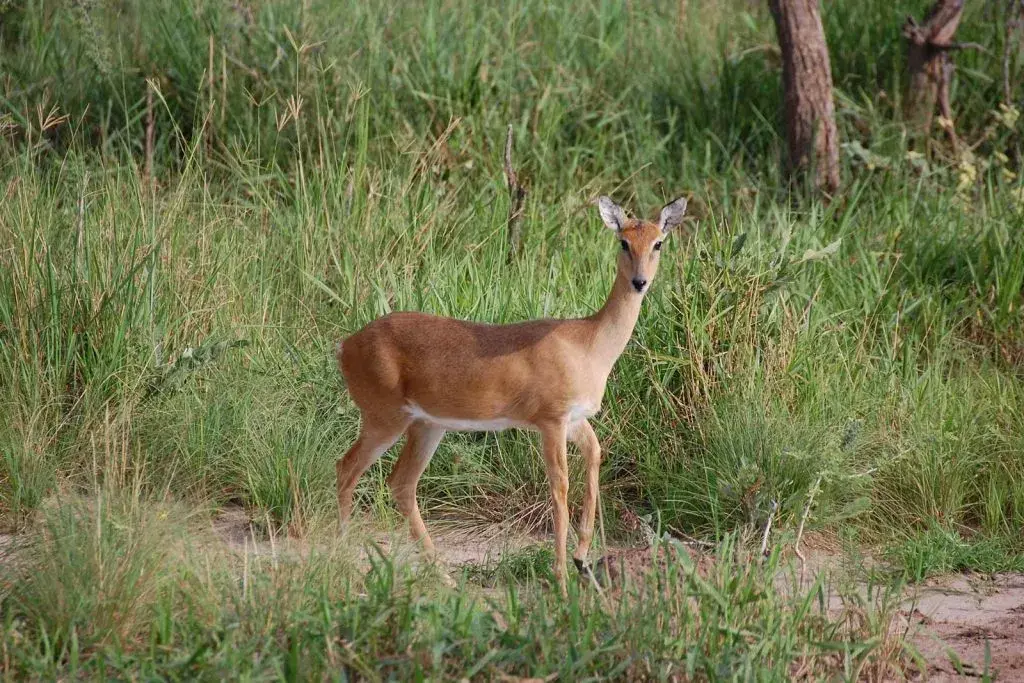The Oribi is a graceful and agile antelope species, native to the grasslands and savannas of Africa. Known for their sleek bodies and remarkable jumping abilities, they have adapted well to the open plains, where they can spot predators from a distance. Below are 23 fascinating facts about this unique animal, shedding light on their biology, behavior, and habitat.
1. Oribi are small antelopes, typically standing around 50–67 centimeters tall at the shoulder.
2. They are found across sub-Saharan Africa, inhabiting regions from Ethiopia to South Africa.
3. The Oribi has a tan coat with a white underbelly, providing camouflage in tall grass where they primarily live.
4. Unlike many antelopes, Oribi are monogamous and often form pairs instead of large herds.
5. They are primarily grazers, feeding on grasses, but they also eat herbs and leaves, especially in the dry season.
6. The lifespan of an Oribi in the wild is typically 8–12 years, although they can live longer in captivity.
7. Male Oribi have slender, ringed horns, which can grow up to 19 centimeters long.
8. These antelopes are known for their speed and agility, capable of reaching speeds of up to 60 km/h when evading predators.
9. Oribi have a strong sense of smell and hearing, helping them detect predators such as lions, leopards, and cheetahs.
10. They can jump as high as 1.5 meters into the air, allowing them to see over tall grasses and spot potential threats.
11. Female Oribi do not have horns, unlike the males, making it easier to distinguish between genders.
12. The main predators of Oribi include lions, cheetahs, jackals, and eagles.
13. Oribi often use their agility to make sharp, unexpected turns while running to evade predators.
14. They communicate through a series of high-pitched whistles, especially when alerting others to danger.
15. Unlike some other antelope species, Oribi do not migrate and tend to stay within established territories.
16. These territories are often marked by scent, with males using secretions from their preorbital glands.
17. The gestation period for a female Oribi is around 7 months, after which she typically gives birth to a single calf.
18. Calves are well-camouflaged and remain hidden in grass for the first few weeks to avoid predation.
19. Oribi populations have decreased in certain regions due to habitat loss and hunting for bushmeat.
20. Conservation efforts in some African countries focus on protecting the grasslands that support Oribi populations.
21. Although they prefer open grasslands, Oribi can sometimes be found in lightly wooded areas near water sources.
22. When threatened, Oribi will often freeze before darting away, using their camouflage as a first line of defense.
23. These antelopes are usually most active during the early morning and late afternoon, avoiding the heat of midday.
The Oribi is a remarkable example of adaptation to Africa's diverse landscapes. While their populations face threats, ongoing conservation efforts aim to preserve their natural habitats and ensure that these elegant antelopes continue to thrive. Their unique characteristics and specialized survival strategies make them a fascinating subject for wildlife enthusiasts and researchers alike.
